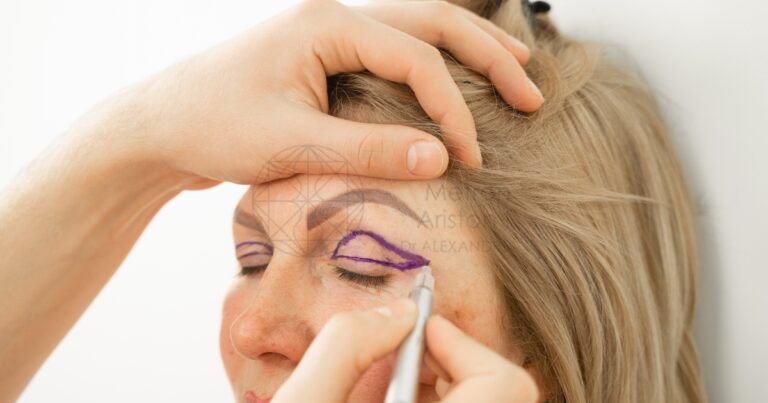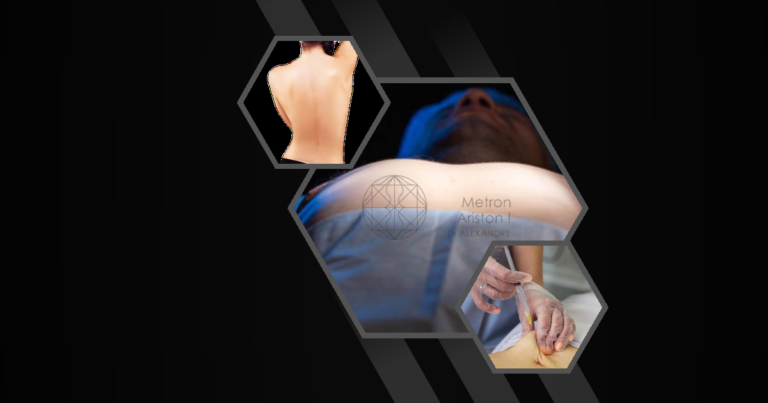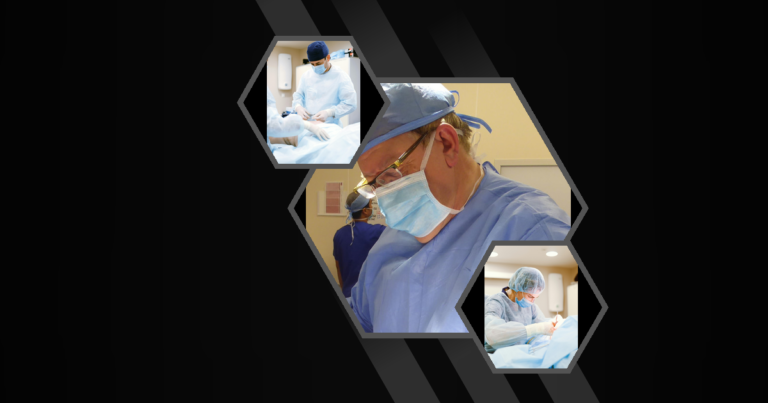How Plastic Surgery Works: A Comprehensive Guide
Plastic surgery is a fascinating field that combines art and science to enhance or reconstruct the human body. It has gained immense popularity over the years, with millions of procedures performed annually. This comprehensive guide will delve into the intricacies of how plastic surgery works, exploring various procedures, techniques, and considerations.
What is Plastic Surgery and How Does it Work?
Plastic surgery is a medical specialty focused on the correction or restoration of form and function. It encompasses both cosmetic and reconstructive procedures. Cosmetic surgery aims to improve appearance, while reconstructive surgery seeks to restore function and normal appearance after injury or illness.
Plastic surgery works by manipulating tissues, including skin, fat, and muscle, to achieve the desired outcome. Surgeons use a variety of techniques, such as incisions, sutures, and grafts, to reshape or repair the body. The process requires precision, skill, and a deep understanding of human anatomy.
- Cosmetic vs. Reconstructive Surgery : Cosmetic surgery is elective and focuses on enhancing appearance, while reconstructive surgery is often medically necessary to restore function.
- Tissue Manipulation : Surgeons use techniques like grafting, flap surgery, and tissue expansion to achieve desired results.
Types of Plastic Surgery Procedures
Plastic surgery encompasses a wide range of procedures, each tailored to specific needs and goals. These procedures can be broadly categorized into cosmetic and reconstructive surgeries.
The Science Behind Plastic Surgery Techniques
The science behind plastic surgery involves a deep understanding of human anatomy, tissue behavior, and healing processes. Surgeons use advanced techniques and technologies to achieve optimal results.
- Grafting and Flap Surgery : These techniques involve transferring tissue from one part of the body to another to repair or reconstruct areas.
- Tissue Expansion : This technique allows the body to “grow” extra skin for use in reconstructive procedures.
Understanding the Surgical Process in Cosmetic Procedures
The surgical process in cosmetic procedures involves several stages, each crucial for achieving the desired outcome.
Pre-operative Consultation and Planning
Before any procedure, a thorough consultation and planning phase is essential. This stage involves discussing goals, assessing health, and planning the surgical approach.
- Patient Assessment : Evaluating the patient’s health, medical history, and expectations.
- Surgical Planning : Developing a detailed plan for the procedure, including incision locations and techniques.
Anesthesia and Incision Techniques
Anesthesia is a critical component of plastic surgery, ensuring patient comfort and safety. Incision techniques vary depending on the procedure and desired outcome.
- Types of Anesthesia : Local, regional, or general anesthesia may be used, depending on the procedure.
- Incision Techniques : Surgeons choose incision locations and methods to minimize scarring and achieve optimal results.
Tissue Manipulation and Reconstruction
Tissue manipulation and reconstruction are at the heart of plastic surgery. Surgeons use various techniques to reshape or repair tissues.
- Suturing and Grafting : Techniques used to close incisions and repair or reconstruct tissues.
- Reconstruction Methods : Flap surgery, grafting, and tissue expansion are common methods used in reconstruction.
How Plastic Surgery Enhances Facial Features
Facial plastic surgery can dramatically enhance appearance and boost self-confidence. Common procedures focus on reshaping and rejuvenating facial features.
Rhinoplasty: Reshaping the Nose
Rhinoplasty, or nose reshaping, is a popular procedure that can improve both appearance and function. It involves altering the bone and cartilage structure of the nose.
- Functional and Aesthetic Goals : Rhinoplasty can address breathing issues and enhance facial harmony.
- Surgical Techniques : Surgeons use open or closed techniques to access and reshape nasal structures.
Facelift: Reversing Signs of Aging
A facelift, or rhytidectomy, is designed to reduce signs of aging by tightening facial tissues and removing excess skin.
- Target Areas : Facelifts address sagging skin, deep creases, and jowls.
- Surgical Approach : Incisions are typically made around the hairline and ears to minimize visible scarring.
Blepharoplasty: Rejuvenating the Eyes
Blepharoplasty, or eyelid surgery, rejuvenates the eyes by removing excess skin and fat from the eyelids.
- Upper and Lower Eyelid Surgery : Procedures can be performed on the upper, lower, or both eyelids.
- Benefits : Blepharoplasty can improve vision and create a more youthful appearance.
Body Contouring: How Plastic Surgery Transforms Physique
Body contouring procedures reshape and enhance the body’s appearance, often following significant weight loss or pregnancy.
Liposuction: Removing Excess Fat
Liposuction is a popular procedure for removing localized fat deposits that are resistant to diet and exercise.
- Target Areas : Common areas include the abdomen, thighs, and arms.
- Techniques : Tumescent, ultrasound-assisted, and laser-assisted liposuction are common methods.
Tummy Tuck: Flattening the Abdomen
A tummy tuck, or abdominoplasty, removes excess skin and fat from the abdomen, often restoring weakened muscles.
- Ideal Candidates : Individuals with loose abdominal skin and weakened muscles.
- Surgical Process : Involves making an incision, removing excess tissue, and tightening muscles.
Breast Augmentation and Reduction
Breast surgery can enhance or reduce breast size, improving body proportions and self-confidence.
- Augmentation : Involves using implants or fat transfer to increase breast size.
- Reduction : Removes excess breast tissue to alleviate discomfort and achieve a balanced appearance.
How Plastic Surgery Works for Reconstructive Purposes
Reconstructive plastic surgery restores function and appearance after trauma, illness, or congenital conditions.
Burn Reconstruction
Burn reconstruction addresses the physical and emotional scars left by severe burns, improving function and appearance.
- Techniques : Skin grafts, flap surgery, and tissue expansion are common methods.
- Goals : Restore function, reduce scarring, and improve appearance.
Cleft Lip and Palate Repair
Cleft lip and palate repair corrects congenital deformities, improving function and appearance.
- Surgical Timing : Typically performed in infancy or early childhood.
- Outcomes : Improved speech, eating, and facial appearance.
Post-Mastectomy Breast Reconstruction
Breast reconstruction after mastectomy restores breast shape and appearance, often using implants or autologous tissue.
- Options : Implant-based or autologous tissue reconstruction.
- Considerations : Timing, technique, and patient preferences.
How Does Recovery After Plastic Surgery Work?
Recovery is a critical phase in the plastic surgery process, requiring careful attention and adherence to post-operative instructions.
Post-operative Care and Healing Process
Proper post-operative care is essential for a smooth recovery and optimal results.
- Follow-up Appointments : Regular check-ups to monitor healing and address concerns.
- Care Instructions : Includes wound care, activity restrictions, and medication management.
Timeline for Visible Results
The timeline for visible results varies depending on the procedure and individual healing factors.
- Initial Recovery : Most swelling and bruising subside within weeks.
- Final Results : May take several months to fully appreciate the outcome.
How Much Does Plastic Surgery Cost?
The cost of plastic surgery varies widely based on several factors, including the procedure, location, and surgeon’s expertise.
Factors Affecting Plastic Surgery Pricing
Several factors influence the cost of plastic surgery, making it important to understand what you’re paying for.
- Procedure Complexity : More complex procedures typically cost more.
- Surgeon’s Experience : Highly experienced surgeons may charge higher fees.
Insurance Coverage for Reconstructive Procedures
Insurance coverage for reconstructive procedures varies, often depending on medical necessity.
- Medical Necessity : Procedures deemed medically necessary may be covered.
- Policy Details : Coverage varies by insurance provider and policy.
Advancements in Plastic Surgery Techniques
Plastic surgery continues to evolve, with advancements improving safety, outcomes, and patient satisfaction.
Non-invasive and Minimally Invasive Procedures
Non-invasive and minimally invasive procedures offer alternatives to traditional surgery, with reduced recovery times and risks.
- Popular Options : Botox, fillers, and laser treatments.
- Benefits : Less downtime, lower risk, and natural-looking results.
3D Imaging and Virtual Reality in Surgical Planning
3D imaging and virtual reality are revolutionizing surgical planning, allowing for precise visualization and customization.
- Pre-surgical Visualization : Helps patients and surgeons visualize potential outcomes.
- Customization : Allows for tailored surgical plans based on individual anatomy.
Choosing a Qualified Plastic Surgeon
Selecting a qualified plastic surgeon is crucial for achieving safe and satisfactory results.
Board Certification and Credentials
Board certification and credentials are essential indicators of a surgeon’s expertise and training.
- Certification : Look for certification by recognized boards, such as the American Board of Plastic Surgery.
- Credentials : Verify the surgeon’s education, training, and professional affiliations.
Importance of Experience and Specialization
Experience and specialization in specific procedures can significantly impact outcomes. Cosmetic procedures mindset focuses on wanting to change how you look People with this mindset often think about ways to improve their appearance Plastic surgery misconceptions Many people think plastic surgery is only for looks but it can also help fix injuries and birth defects
Rhinoplasty pricing variations The cost of nose surgery can be different depending on where you live and which doctor you choose Some surgeons charge more than others for Surgical eye enlargement is a procedure to make eyes look bigger Doctors use special techniques to change the shape of the eyelids
Surgical enhancements durability refers to how long cosmetic changes from surgery last These improvements can be temporary or permanent depending on the type of procedure Plastic surgery Accutane precautions Doctors say wait at least six months after stopping Accutane before having plastic surgery because the medicine can affect healing and increase scarring risks
Surgeon experience matters because doctors who have done many surgeries are better at helping patients Cosmetic enhancements popularity More people are getting beauty treatments to look better and feel more confident these days
- Procedure Experience : Choose a surgeon with extensive experience in the desired procedure.
- Specialization : Consider surgeons who specialize in the specific area of interest.
Psychological Aspects of Plastic Surgery
The psychological aspects of plastic surgery are as important as the physical changes, impacting self-esteem and mental health.
Managing Expectations and Body Image
Managing expectations and body image is crucial for a positive surgical experience.
- Realistic Expectations : Understanding the limitations and potential outcomes of surgery.
- Body Image : Addressing body image concerns and ensuring a healthy mindset.
Mental Health Considerations Before and After Surgery
Mental health considerations are vital before and after surgery, influencing satisfaction and overall well-being.
- Pre-surgical Assessment : Evaluating mental health and readiness for surgery.
- Post-surgical Support : Providing support and resources for emotional well-being.
FAQ’s
Is plastic surgery permanent?
Plastic surgery results can be long-lasting, but they are not always permanent. Factors such as aging, lifestyle, and genetics can affect the longevity of results. Maintenance procedures may be necessary to preserve the desired outcome.
How painful is plastic surgery?
Pain levels vary depending on the procedure and individual pain tolerance. Most patients experience discomfort rather than severe pain, which can be managed with medication. Surgeons provide detailed post-operative care instructions to minimize discomfort.
What is the most difficult plastic surgery?
The complexity of plastic surgery varies, but procedures like rhinoplasty and reconstructive surgeries are often considered challenging. These surgeries require precision and expertise to achieve both functional and aesthetic goals. Choosing an experienced surgeon is crucial for successful outcomes.
How long does plastic surgery last?
The longevity of plastic surgery results depends on the procedure and individual factors. Some procedures, like facelifts, can last 5-10 years, while others, like breast implants, may require replacement after a decade. Maintaining a healthy lifestyle can prolong results.








